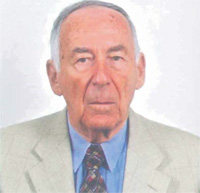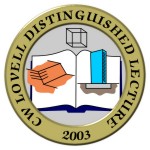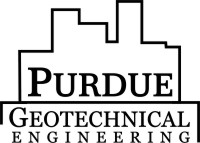
13th C. W. Lovell Distinguished Lecture
4:00 p.m., September 23, 2015
Lawson Hall - Room 1142, Purdue University
Professor Michele Jamiolkowski
Soil Mechanics and the Observational Method: Foundation Challenges at the Zelazny Most Tailings Storage Facility
This lecture illustrates the geotechnical aspects of the development of one of the world’s largest copper tailings disposal facilities, located at Zelazny Most in southwest Poland. Its operation began in 1977, and by the end of 2013, 527 x 106m3of tailings had already been stored within the confining embankment dam (‘ring dam’) of about 14.3 km in total length. The foundations of the ring dam lie on Pleistocene deposits, underlain by a thick sequence of Pliocene sediments. The period of operation of the facility will continue until exhaustion of the ore body, which is estimated to occur in 2042, when the total volume of the tailings stored will reach 1000 x 106m3. In this presentation, highlights of this project will be described.
Prof. Jamiolkowski will also give an informal lecture, "The Behavior of the Leaning Tower of Pisa 15 Years After the End of Stabilization Works," on Thursday, September 24th at 1:30pm in Lawson 1142.
This seminar summarizes the temporary and reversible, as well as the final stabilization works carried out to stabilize the tower of Pisa in the period from 1993 to 2001, supported by the results of monitoring of the tower movement, updated as to the spring of 2015. The seminar will include the history of the monument, the geotechnical site characterization, the threats endangering the tower survival and the geotechnical stabilization and structural strengthening work.

About Professor Michele Jamiolkowski
Professor Michele Jamiolkowski was born in Poland in 1932, and received his master’s degree in Soil Mechanics and Engineering Geology from the Warsaw Technical University in 1959. He also obtained his postgraduate studies at the University of Kiev, the Technical University of Torino in Italy, the University of Laval in Quebec, and MIT. In 1964, he founded the engineering consulting company, Studio Geotecnico Italiano in Italy, which had become his adopted country. In 1969 he was appointed to a professorship in Geotechnical Engineering at the University of Torino, where he is currently Professor Emeritus.
Professor Jamiolkowski was one of the founders of the first doctoral program in geotechnical engineering in Italy in 1979. His primary research interests include the mechanical behavior of soils, laboratory and in situ testing, soil dynamics, bearing capacity and settlements of shallow foundations, and soil improvement. He is the author of over 250 publications and is particularly famous for his presidency of the International Committee for safeguarding the Leaning Tower of Pisa. From 1990-2001, he worked to ensure the safety of the Pisa tower for another 300 years through under-excavation. The achievement captured the interest of the world in the complexities of soil mechanics, giving prominence to geotechnical engineering in a unique way.
Professor Jamiolkowski has consulted on several world famous projects, including: the Venice defense system against high water (MOSE project); safe guarding the historic monuments of Rome during the construction of the tunnels for the new subway line; and the reconstruction and development of the nuclear power plant in Chernobyl.
Professor Jamiolkowski was a Ralph B. Peck Lecturer at the OSCE Geo-Institute in 2006, the ZaChieh Moh Lecturer at Taipei in 2010, and the Victor de Mello Lecturer in Lisbon in 2011. He holds many awards and honors, including the De Beer Award from the Belgium Geotechnical Society; the ASCE’s Karl Terzaghi and Ralph B. Peck Lecture Awards; and the Italian Award ‘Savior of the Art’. He is a foreign associate of the US National Academy for Engineering and a corresponding member of the Polish Academy of Sciences. He also served as president to the International Society of Soil Mechanics and Geotechnical Engineering from 1994 to 1997.


